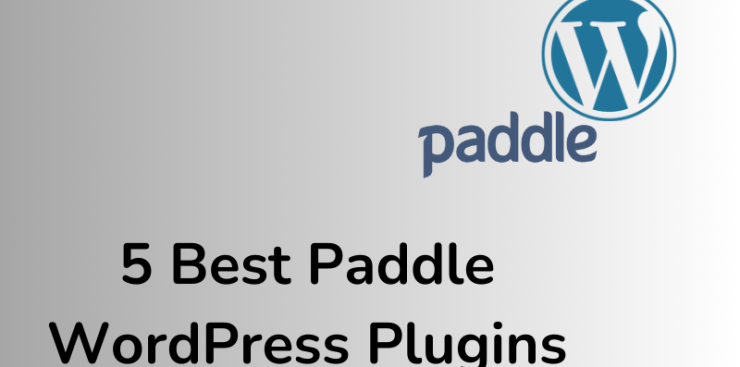 September 17, 2023
September 17, 2023
A Comprehensive Guide to Installing SSL on WordPress
Securing your WordPress website is crucial to protect both your site and the data it handles. One fundamental aspect of website security is the implementation of SSL (Secure Sockets Layer) encryption. SSL not only ensures data integrity but also boosts your site’s credibility by displaying the coveted padlock icon in web browsers. In this comprehensive guide, we will walk you through the process of install SSL on your WordPress website.
Table of Contents
- What is SSL?
- Why Do You Need SSL for Your WordPress Website?
- Types of SSL Certificates
- Choosing the Right SSL Certificate
- How to Install SSL on WordPress a. Step 1: Purchase an SSL Certificate b. Step 2: Verify Domain Ownership c. Step 3: Generate a Certificate Signing Request (CSR) d. Step 4: Install the SSL Certificate e. Step 5: Update WordPress Settings f. Step 6: Mixed Content Issues
- Testing Your SSL Certificate
- Ongoing SSL Maintenance
- Conclusion
SSL, or Secure Sockets Layer, is a protocol that encrypts data transmitted between a user’s web browser and a website’s server. It ensures that any information transferred, such as login credentials, payment details, and personal data, remains private and secure.
- Why Do You Need SSL for Your WordPress Website?
There are several compelling reasons to implement SSL on your WordPress website:
a. Data Security: SSL encryption safeguards user data from eavesdropping and interception, ensuring their sensitive information remains confidential.
b. SEO Benefits: Google considers SSL as a ranking factor, and websites with SSL certificates tend to rank higher in search results.
c. User Trust: Visitors are more likely to trust a website that displays the padlock icon in their browser’s address bar, indicating a secure connection.
d. Compliance: Many regulatory frameworks, such as GDPR, require websites to secure user data through encryption.
- Types of SSL Certificates
Before you install SSL on your WordPress site, you should understand the different types of SSL certificates available:
a. Domain Validated (DV) SSL Certificates: These certificates verify domain ownership and are the most basic type of SSL. They are ideal for personal blogs and informational websites.
b. Organization Validated (OV) SSL Certificates: OV certificates authenticate both domain ownership and the organization behind the website, providing higher trust levels. They are suitable for businesses and e-commerce sites.
c. Extended Validation (EV) SSL Certificates: EV certificates offer the highest level of trust and require rigorous verification of the organization. They are recognizable by the green address bar in browsers and are typically used by large corporations and financial institutions.
d. Wildcard SSL Certificates: Wildcard certificates secure a domain and all its subdomains with a single certificate. They are beneficial for websites with multiple subdomains.
- Choosing the Right SSL Certificate
Selecting the right SSL certificate for your WordPress website depends on your specific needs and budget. Generally, DV certificates are sufficient for most blogs and personal websites, while businesses and e-commerce sites may prefer OV or EV certificates for added trust.
- How to Install SSL on WordPress
Now, let’s delve into the step-by-step process of installing SSL on your WordPress site:
Step 1: Purchase an SSL Certificate
Start by purchasing an SSL certificate from a reputable Certificate Authority (CA). There are several CAs to choose from, such as Comodo, DigiCert, and Let’s Encrypt (which offers free certificates). Make sure to pick a certificate that suits your website’s requirements.
Step 2: Verify Domain Ownership
The CA will require you to verify that you own the domain for which you’re obtaining the certificate. This typically involves receiving an email sent to the domain’s administrative contact or adding a specific DNS record.
Step 3: Generate a Certificate Signing Request (CSR)
Next, generate a CSR using your web hosting control panel or a dedicated tool provided by your hosting provider. The CSR contains your server’s public key and essential details about your website.
Step 4: Install the SSL Certificate
Submit your CSR and other required information to the CA. They will issue your SSL certificate, which you can then download from their website. Install the certificate on your web server following your hosting provider’s instructions. This process can vary depending on your hosting environment (e.g., cPanel, Plesk, or manual installation via SSH).
Step 5: Update WordPress Settings
Once the SSL certificate is installed on your server, it’s time to configure WordPress to use HTTPS. To do this, log in to your WordPress admin panel and navigate to “Settings” > “General.” Update the “WordPress Address (URL)” and “Site Address (URL)” to include “https://” instead of “http://.”
Step 6: Mixed Content Issues
After enabling SSL, you may encounter mixed content issues, where some resources (like images, scripts, or stylesheets) are still loaded over HTTP. To resolve this, use the “Better Search Replace” plugin or manually update your content to use HTTPS links.
- Testing Your SSL Certificate
To ensure everything is working correctly, test your SSL certificate. Visit your website using HTTPS, and you should see the padlock icon in the browser’s address bar. Additionally, use online tools like SSL Labs’ SSL Server Test to check your SSL configuration for vulnerabilities.
- Ongoing SSL Maintenance
SSL certificates have a limited validity period, typically ranging from one to two years. It’s crucial to renew your certificate before it expires to maintain secure connections on your website. Most CAs will send renewal reminders via email.
Install SSL Throw WordPress Plugin
To manually enable SSL for WordPress website can be difficult for your. In that case i can explain you the most easiest way to install SSL on WordPress with a Plugin. There has a plugin in to install SSL which name is Really Simple SSL . Navigate to your dashboard>plugins> Add New > Then search really Simple SSL. After install the plugin At first take backup of your website to avoid any mistake. You can take backup with All in One Migration
Also you can read our another article how to install a plugin on WordPress.
After installation is complete, click the “Activate” button to enable the plugin. Once activated, the “Really Simple SSL” plugin will automatically detect your SSL certificate and make the necessary changes to your website settings to enable SSL. It will also update your WordPress and site URL settings to use HTTPS.
The plugin also includes a Mixed Content Fixer feature, which attempts to fix any “mixed content” issues that might occur when moving from HTTP to HTTPS. You can enable this feature by clicking on “Settings” under “SSL” in your WordPress dashboard. Review the settings and click the “Enable” button for the Mixed Content Fixer.
After the plugin has made the necessary changes, visit your website using “https://” in the URL to ensure that SSL is working correctly. You should see the padlock icon in your browser’s address bar, indicating a secure connection.
If you have caching plugins or services in place, clear your cache to ensure that your site loads over HTTPS for all users.
Use online tools or SSL testing services to verify that your SSL certificate is correctly configured and secure.
- Conclusion
Implementing SSL on your WordPress website is a vital step towards securing user data and establishing trust with your audience. By following the steps outlined in this comprehensive guide, you can successfully install an SSL certificate and enhance the security and credibility of your WordPress site. Remember to stay vigilant with SSL certificate renewals and keep your website safe for both you and your visitors.

Hi, My name is Shamim. I am a freelance PHP developer in Bangladesh. I have been working as a freelance developer since 2014. I am a passionate and creative web development person. As a senior level, I focus on your requirements in detail and deliver high-quality work on your budget.








Quality content is the secret to attract the visitors
to visit the web site, that’s what this site is providing.